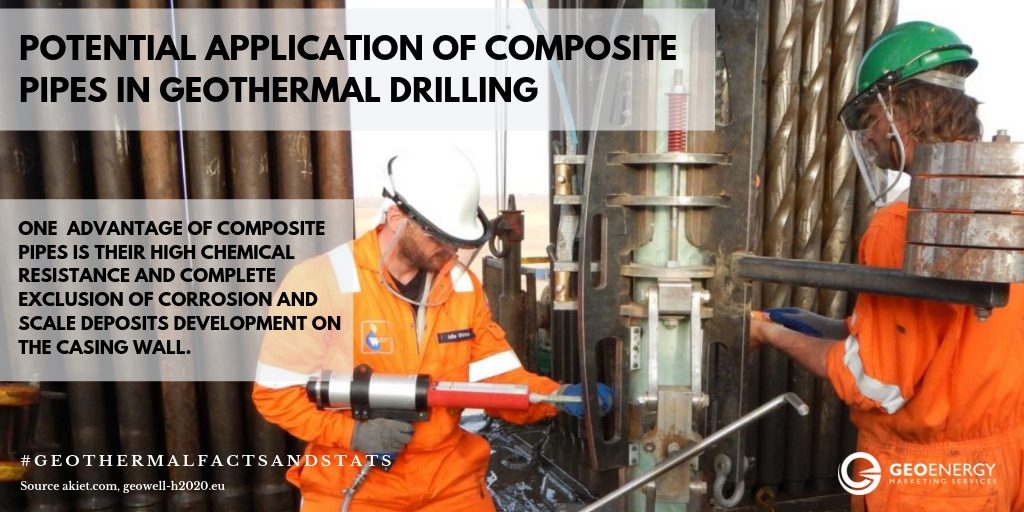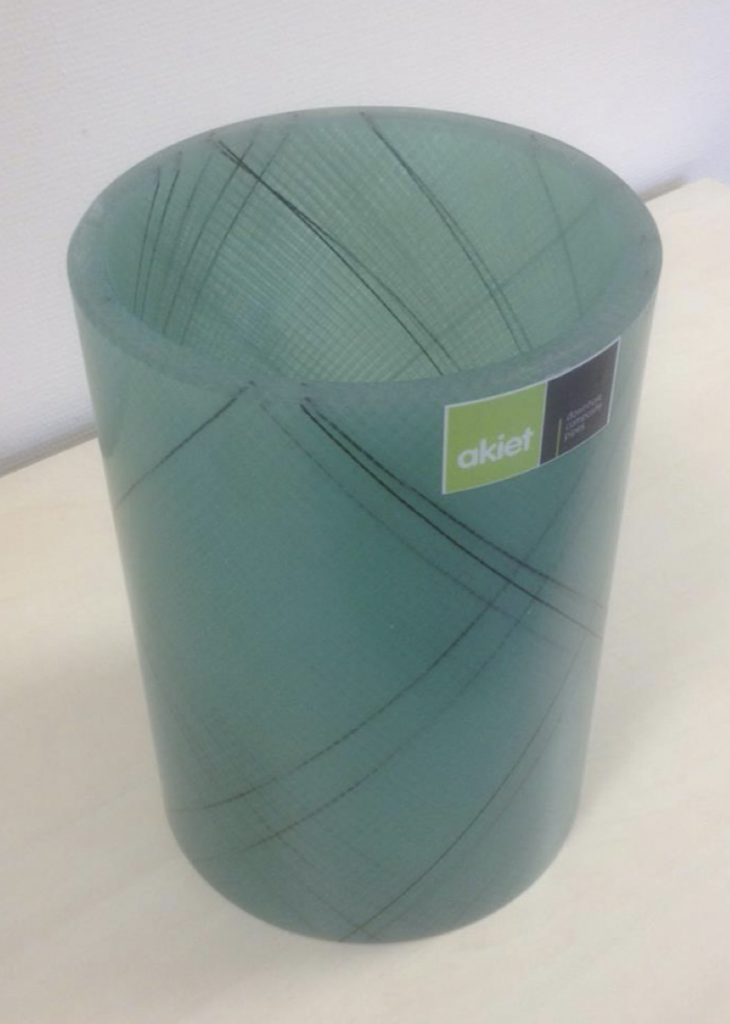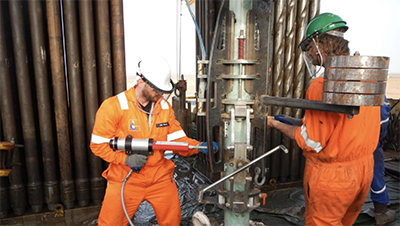One of the technologies that may undoubtedly revitalize the global geothermal market in the very near future is the use of composite materials for casing, liner and drill pipes in production as well as injection wells. Composites are created by combining two or more materials, one of which has a binding function and the others, introduced in granular, fibrous or layered form, serve to strengthen it. Composites are non-metallic anisotropic materials, that enable pipe constructions with different strength and physical properties depending on the direction of consideration. A typical composite pipe is made of a composition of resin reinforced with glass fiber. Pipes currently available on the market are able to operate at a downhole temperature not exceeding 105°C, however, research is underway to use composite materials under temperatures from 150 to 170°C in geothermal wells deeper than 3500 m. In the future, development of composite materials capable of operating in high enthalpy boreholes with temperatures of up to 300°C and depths of up to 5500 m is being investigated. Composite pipes with outside diameters between 5 ½ and 13 3/8 inches are currently available on the market. The maximum well pressure given by one of the manufacturers is 345 bar and their maximum strength is 450 tons. However, these parameters depend on the temperature in the well, geochemistry of the reservoir, the type of composites used and planned lifetime of the well. Composite pipes, on the basis of one of the manufacturers’ data sheet, similarly to the conventional steel pipes, are 12 m long and have composite connections, which are installed when the pipes are being run into the hole. Such pipes are also compatible with conventional steel or composite-to-metal connections. Connecting two composite pipes on a drilling platform is the most technically demanding bricklaying process, which requires careful preparation, appropriate conditions and the right time to cure the adhesive material. The planned time for the installation of pipe joints is about 10 minutes.
Fig. 1. Installation of casing coupling onto composite casing (source: akiet.com)
One of the biggest advantages of composite pipes is their high chemical resistance and complete exclusion of corrosion and scale deposits development on the casing wall. Corrosion is the basic problem of conventional steel materials, which is caused by the presence of aggressive reservoir gases (e.g. CO2, H2S). Composite pipes enable safe production of highly saline geothermal waters and the use of various types of chemicals being applied in the drilling industry. A composite material is also compatible with most commercially available drilling muds and cement slurries used in the geothermal industry. Another advantage of composites is their high ductility, and lighter weight (around 6 times) compared to the conventional steel casing. The relatively low weight of the pipes enables the use of drilling rigs with a much lower hoisting capacity, which significantly reduces the investment costs of the geothermal project. Moreover, the low weight of composite pipes reduces the cost of transport. The manufacturing process of composite pipes also reduces CO2 production and is considered environmentally friendly.
Composite pipes, thanks to their smooth surface, reduce the phenomenon of friction to a minimum, which reduces the flow resistance of geothermal fluids and drilling mud, and significantly reduces pumping costs. The decrease in pumping costs, in particular, can be seen in deeper boreholes, which require the use of downhole pumps to maintain geothermal water production. The smooth surface of composite pipes helps to remove the filtrate (mud cake) from the pipes and makes the cementation of casing strings much more efficient. Composite materials also exhibit significantly lower heat conductivity compared to conventional steel pipes used in the drilling industry. This parameter creates a potential use of composite pipes as internal pipes in concentric, especially deep, ground
Fig. 2. Example of a composite casing (source: akiet.com)
Author: Michal Kruszewski



